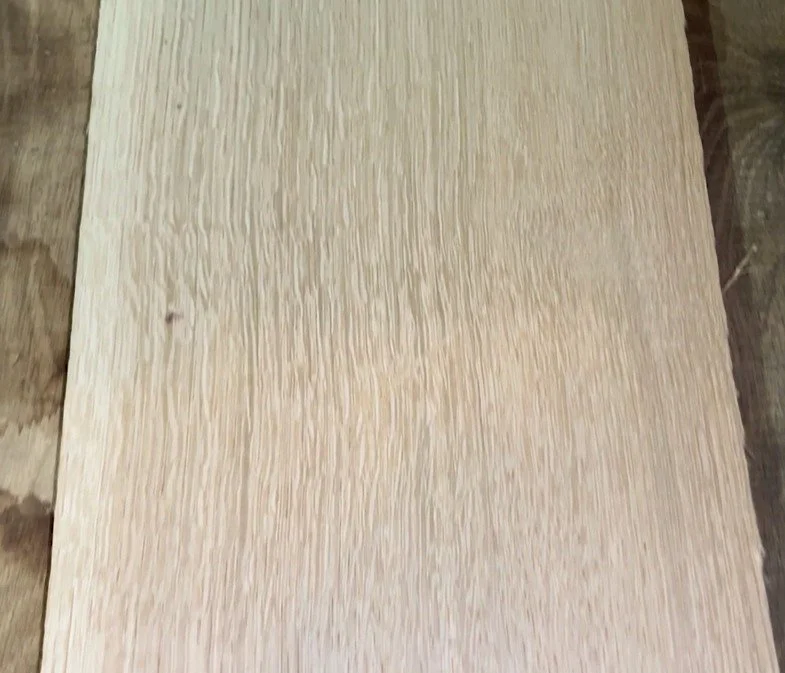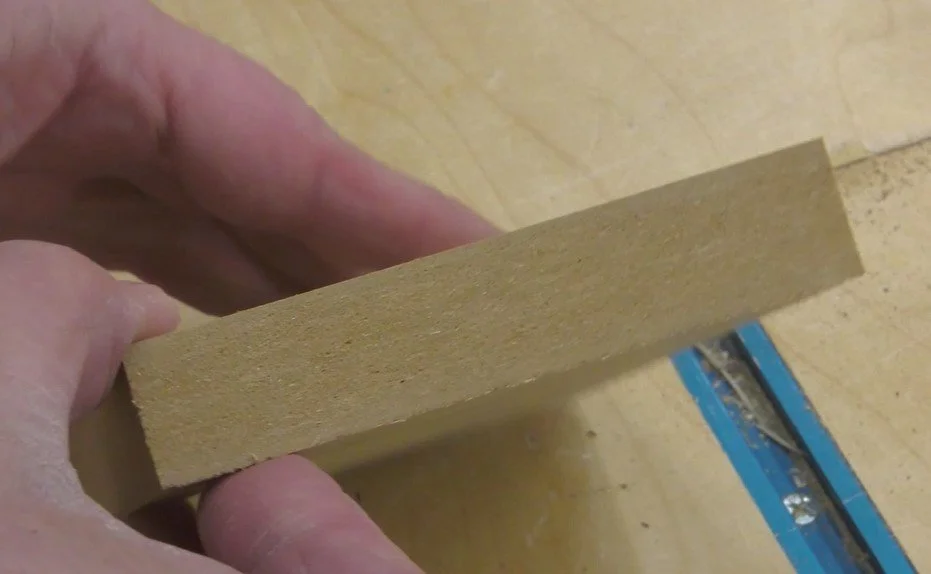THE TRUTH ABOUT MDF WILL MAKE YOU THINK TWICE!
A couple of years ago, I made a video with some tips for using MDF in woodworking projects. As I expected, I got hammered by a bunch of hoity-toity, fru-fru, gatekeeping woodworkers who think real woodworkers should use nothing less than gold-plated rosewood.
Don’t get me wrong, I love beautifully figured, natural wood. I use solid wood in most of my projects. But if you set aside your preconceived notions about manufactured materials, you will find that there is a time and place for MDF, even in fine furniture making.
MDF - What is it?
First, since I was once called an elitist for using a fancy acronym like MDF without defining it (true story), let me be clear about what we’re talking about. MDF stands for medium-density fiberboard. It’s wood, but it’s been broken down into tiny fibers, mixed with resin, and pressed into sheets. Contrary to popular belief, MDF isn’t made as a money-saving material. In fact, it costs about as much as some decent plywoods. Once you realize its purpose, you might see it in a new light.
Solid wood is essentially a bunch of straw-like wood fibers. As the moisture content changes in the air, those fibers swell, contract, twist, and warp. And as woodworkers, we have to follow certain rules and employ various construction techniques to deal with that natural movement so our projects will last. But sometimes, you just need a material that will remain stable on its own.
Benefits of using MDF
Because MDF has no grain, it doesn’t move, twist, or warp like solid wood. In fact, the moisture in the air has little effect on it at all. It’s one of the most stable, predictable wood-based materials there is. And a savvy woodworker can take advantage of that.
For example, some finely veneered panels use MDF as a core substrate because the movement of solid wood might tear the delicate fibers in the veneer.
MDF can also be shaped and machined in ways that plywood can’t. For example, you can cut a profile on the edge of an MDF panel without exposing unsightly alternating grain, as you'd find in plywood layers. In fact, MDF can take sharp detail. This is why it’s used to make a lot of built-ins, even in high-end homes.
Additionally, MDF provides an ideally smooth surface for painting, making it very popular for the center panels of modern cabinets. Of course, whenever I mention using MDF for cabinet door panels, I get comments from people who swear the whole room will turn to mush inside a week because MDF and water don’t mix. But I say, if you have so much water gushing onto your cabinet doors that it's soaking through the paint, you’ve got bigger problems.
This isn’t a new material. Decades of use have proven that, when used properly, MDF is a perfectly acceptable component in quality construction. But lest you think I’m throwing away all my hardwood and jumping fully onto the MDF train, let me repeat: when used PROPERLY, MDF is perfectly acceptable. There are plenty of improper ways to use MDF, and significant downsides that must be considered.
Downsides of Using MDF
For one thing, water is its greatest enemy. While I would use it for door panels in most kitchen cabinets, some folks avoid placing it under the sink, around the dishwasher, or even in a bathroom with a shower.
MDF also sags if left unsupported, so shelves longer than about 18 inches need to be reinforced with added supports or hardwood edging.
And while I like MDF for flat panels that are integrated into a structure (such as surrounded by a hardwood frame), things can get dicey when you join MDF directly to more MDF. Glue alone is seldom very strong. Screws may be used to reinforce a joint, but you must bore a proper pilot hole to avoid splitting. The best way to join MDF is with a mechanical joint, such as a dado or a groove, coupled with glue and screws. And even then, I wouldn’t want to move it around too much—think built-ins rather than standalone furniture.
MDF is also very dusty, and you do not want to breathe that stuff in. Wear a proper N95 or better respirator not only while cutting, but after the saw turns off as the dust settles.
Finally, the manufacturing process creates a very smooth surface, but more fibrous edges must be treated to achieve a consistent appearance. One way is to apply drywall joint compound. Some use bond-o instead.
To me, MDF is to plywood what pocket screws are to joinery. When I hear people say real woodworkers don’t use pocket screws, I know they have a limited understanding of the craft because centuries-old furniture from the Shakers and other masters contain pocket screws. Likewise, a veneered MDF panel in its proper place will outlast you, me, and another ten generations.
You don’t have to use it. There are other perfectly suitable options out there as well. But plenty of craftsmen do keep a little MDF in their shops without shame because they understand its proper use—perhaps a bit better than the gatekeepers who haughtily claim it has no legitimate use in woodworking.
★SOME OF MY FAVORITE INEXPENSIVE TOOLS★
-ISOtunes Hearing Protection (Save 10%): https://bit.ly/3BHYdH7
-BOW Featherboards: https://amzn.to/430ldhv
-123 Blocks: https://lddy.no/vpij
-Mechanical Pencils: https://amzn.to/2PA7bwK
-Lumber pencil: https://amzn.to/2QtwZjv
-Pocket Measuring Tape: http://amzn.to/2kNTlI9
-Nut/Bolt/Screw Gauge: http://amzn.to/2CuvxSK
-Self-Centering Bits: https://amzn.to/2xs71UW
-Steel Ruler: https://lddy.no/10mv7
-Center-Finding Ruler: https://lddy.no/10nak
-Bit & Blade Cleaner: https://amzn.to/2TfvEOI
-Narex Chisels: https://lddy.no/sqm3
-Mini Pull Saw: https://amzn.to/2UEHBz6
-Shinwa Rulers: https://lddy.no/zl13
(If you use one of the affiliate links above, we may receive a small commission)


